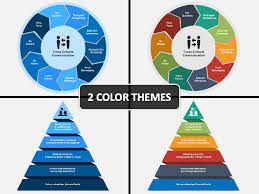Cross-cultural communication is an essential part of our globalized world. With the rise of international trade, travel, and technology, people from different cultures are interacting more frequently than ever before. However, communicating effectively across cultures can be challenging, as each culture has its own unique set of values, beliefs, and communication styles.
Effective cross-cultural communication requires understanding and respect for cultural differences. It’s important to recognize that what may be acceptable or even expected in one culture may be considered rude or inappropriate in another. For example, direct communication is valued in some cultures while indirect communication is preferred in others. In some cultures, it’s common to interrupt others during conversations while in others it’s considered impolite.
To avoid misunderstandings and build strong relationships across cultures, it’s important to take the time to learn about other cultures’ customs and traditions. This can involve researching the country’s history and social norms or simply asking questions and listening attentively when communicating with someone from a different culture.
Another key aspect of cross-cultural communication is avoiding stereotypes and assumptions. It’s easy to fall into the trap of assuming that all members of a particular culture think or behave the same way. However, this can lead to misunderstandings and perpetuate harmful stereotypes. Instead, it’s important to approach each individual as a unique individual with their own thoughts and experiences.
One effective way to improve cross-cultural communication is by learning another language. Language is not only a tool for communication but also a reflection of cultural values and beliefs. Learning another language can help you gain insight into another culture’s worldview and enable you to communicate more effectively with people from that culture.
In conclusion, effective cross-cultural communication is essential for building strong relationships across borders and achieving success in today’s globalized world. By taking the time to learn about other cultures’ customs and traditions, avoiding stereotypes and assumptions, and learning another language if possible, we can bridge cultural divides and create a more understanding and interconnected world.
Cross-Cultural Communication: Basic Elements, Methods, Importance, and Examples
- What are the 4 basic elements of cross-cultural communication?
- What are the 5 cross-cultural communication methods?
- Why is cross-cultural communication important?
- What are examples of cross-cultural communication?
What are the 4 basic elements of cross-cultural communication?
The 4 basic elements of cross-cultural communication are:
Cultural awareness: Understanding and recognizing cultural differences, values, beliefs, and customs.
Verbal communication: The words we use to communicate with others from different cultures. This includes understanding language barriers, accents, and dialects.
Nonverbal communication: Body language, facial expressions, gestures, and other nonverbal cues that convey meaning in different cultures.
4. Listening skills: Active listening involves paying attention to what the other person is saying and trying to understand their perspective without judgment or bias. This includes being aware of cultural differences in communication styles and adapting accordingly.
What are the 5 cross-cultural communication methods?
There are many cross-cultural communication methods, but here are five common ones:
- Active Listening: Active listening involves paying attention to what the other person is saying and demonstrating that you understand their point of view. This method helps to build trust and rapport between people from different cultures.
- Non-Verbal Communication: Non-verbal communication includes body language, facial expressions, and tone of voice. Different cultures have different non-verbal cues, so it’s important to be aware of these differences when communicating with people from different cultures.
- Respect for Cultural Differences: Showing respect for cultural differences is essential in cross-cultural communication. This includes being aware of cultural customs and traditions, avoiding stereotypes and assumptions, and adapting your communication style to suit the other person’s culture.
- Clear Communication: Clear communication involves using simple language, avoiding jargon or technical terms that may not be understood by people from different cultures, and checking for understanding to ensure that your message has been received correctly.
- Empathy: Empathy involves putting yourself in the other person’s shoes and trying to understand their perspective. This method can help to build trust and understanding between people from different cultures by showing that you value their thoughts and feelings.
By using these cross-cultural communication methods, individuals can improve their ability to communicate effectively with people from different cultures, build stronger relationships across borders, and achieve success in today’s globalized world.
Why is cross-cultural communication important?
Cross-cultural communication is important for several reasons, particularly in today’s globalized world. Here are some of the key reasons why it’s essential:
- Building relationships: Effective cross-cultural communication helps build strong relationships with people from different cultures. By understanding and respecting cultural differences, we can establish trust and mutual respect, which is essential for successful collaboration and cooperation.
- Avoiding misunderstandings: Misunderstandings can arise when people from different cultures communicate with each other. This can lead to conflicts or missed opportunities. By understanding cultural differences in communication styles, we can avoid misunderstandings and communicate more effectively.
- Global business: In today’s global economy, businesses often operate across borders and deal with customers, suppliers, and partners from different cultures. Effective cross-cultural communication is essential for building successful business relationships and achieving success in international markets.
- Diversity and inclusion: Cross-cultural communication promotes diversity and inclusion by recognizing the value of different perspectives and experiences. By creating an inclusive environment that values diversity, we can foster innovation and creativity.
- Personal growth: Learning about other cultures through cross-cultural communication can broaden our perspective and help us grow as individuals. It enables us to see the world from a different angle, challenge our assumptions, and gain new insights into human behavior.
In summary, cross-cultural communication is important because it helps build relationships, avoid misunderstandings, promote global business success, foster diversity and inclusion, and facilitate personal growth. It’s an essential skill for anyone who wants to succeed in today’s interconnected world.
What are examples of cross-cultural communication?
Cross-cultural communication refers to the exchange of information and ideas between people from different cultural backgrounds. Here are some examples of cross-cultural communication:
- A business meeting between a Japanese company and an American company, where the Japanese representatives bow as a sign of respect while the American representatives shake hands.
- A tourist visiting a foreign country and trying to communicate with locals who speak a different language.
- An international student attending a university in a foreign country and interacting with classmates from various cultural backgrounds.
- A healthcare professional treating patients from different cultural backgrounds, where certain medical practices or beliefs may differ based on culture.
- A multinational team working together on a project, where members must navigate cultural differences in communication styles, decision-making processes, and work expectations.
- A diplomat negotiating with officials from another country, where understanding cultural norms and values is crucial for successful negotiations.
- A social media influencer collaborating with brands or followers from different countries, where understanding cultural differences in marketing strategies and messaging is key.
These are just a few examples of cross-cultural communication in various contexts. Effective cross-cultural communication requires awareness, respect, and sensitivity towards other cultures’ customs and traditions to build strong relationships across borders.


